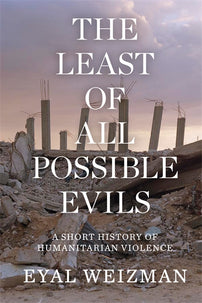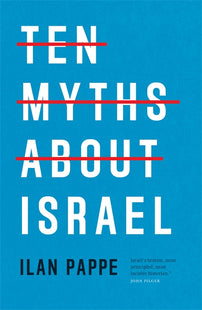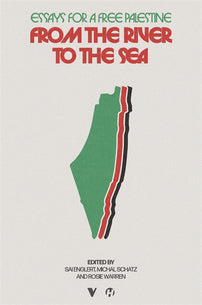The Target Factory
Júlia Nueno Guitart on how the Israeli military uses AI to turn civilian sites into military targets.

On 29 October, 2023, a video of a young Palestinian in Gaza went viral on TikTok. He holds a clip-on microphone and greets his audience after a period of internet and communication disruption. A soundtrack of broadcast music has been added in the video's post-production. Behind him, people line up in what he describes as a queue for bread at one of the few bakeries still operating in the north of the Gaza Strip. On the video's feed, an infinite scroll of comments praise and bless Abboud, who despite his young age, has become an improvised and widely followed journalist in this war.
Images and videos of queues at bakeries circulated during October as power cuts and fuel shortages prevented Palestinians from cooking at home. Some reached the international media, but most were shared and liked thousands of times by a global audience following Palestinians as they witnessed the collapse of the conditions of life in Gaza. On 4 November, AlJazeera published a video of a bombing next to a bakery, identifiable by its sign as Al-Sharq Bakery. The architectural references of both videos allow them to be geolocated within a few metres of each other.



Figure 1. Top: TikTok video (29 October). Middle: AlJazeera video (4 November). Bottom: geolocation of videos and bakery
In the period between October and early November, Forensic Architecture documented the destruction of seventeen bakeries in the Gaza strip. In some cases, such as the al-Sharq bakery, the surrounding area was bombed while people were queuing, damaging the building and injuring civilians; in others, such as the al-Jadeed bakery, the target was the bakery itself, killing several people and leaving a crater in place of the building.
Visual evidence shows the targeting of solar panels, such as those of Families Bakery, making it impossible to produce bread. These appear to be deliberate strikes, as houses and infrastructure in these areas were not targeted at the time, although much of it was later destroyed. Bakeries were already part of the pre-existing network of humanitarian aid distribution – the Nuseirat bakery had reportedly received flour from UNRWA just hours before it was bombed. With bread being one of the few products available, bakeries became an essential civilian infrastructure in the early weeks of the war. They were bombed north of Wadi Gaza and in towns in the centre of the Strip, with more than half of the attacks taking place in the two weeks following Israel's 13 October evacuation order, which ordered 1.1 million Palestinians to leave their homes in northern Gaza.

Figure 2. Bakeries targeted in Gaza between 7 October and 4 November.
The repeated destruction of bakeries indicates a shift in the logic used by Israel to justify its actions under international humanitarian law (IHL). In previous wars, an economic approach to minimising of violence allegedly underpinned military strategy: determining how many civilian casualties were acceptable in order to eliminate a target. International law, intended to moderate violence, plays a key role in calculating and managing this economy of violence.[1] In the 2021 Gaza war, for example, the Israeli Defence Forces (IDF) argued that warning phone calls made the strikes on high-rise buildings legal. The IDF presented these warnings as measures of proportionality, claiming that, by alerting residents to evacuate minutes before the bombs levelled their homes, harm was minimised.
Within this economy, another option is available: when the ratio of civilians to militants is too high, as it is in urban space, where populations live, then civilians can be reclassified as combatants to redress the imbalance. The scale of destruction of physical and social infrastructure in the current war, including the targeted killing of health workers, civil servants and civil society organising shelter or aid distribution, suggests the use of this strategy. By broadening who and what constitutes a military target, mass killings take place under the guise of legal and strategic necessity. Arguably, the fastest way to turn civilians into combatants and civilian infrastructure, such as bakeries, into military bases on a massive scale is through the use of AI.
[book-strip index="1"]
In May 2024, the Israeli Air Force and the Intelligence Division were awarded the 2024 Israeli Defence Prize for the success of their "target factory" (מפעל המטרות). According to an official government statement, these divisions were recognised for their innovative use of "advanced algorithms and AI" to identify potential military targets that appear to be civilians. A senior military official told the Jerusalem Post earlier this year that, for the first time, the army's AI systems are allowing it to generate new targets faster than it can strike them. He noted that in the 2014 and 2021 wars, the IDF had exhausted its list of targets. Previously, finding and justifying new targets seemed to be a bottleneck in Israeli military operations.
AI is now automating the justification process, which allowed the bombing to continue relentlessly from early October to late November. Military actors function as information processors, adapting their tactics to create new intelligence to support their actions. Viewed through this lens, the strategies of Clausewitz and Sun Tzu, traditionally seen as military doctrine, can also be interpreted as media strategies focused on information control. That is, military doctrine encompasses not only combat tactics, but also how information is handled, deciding what is revealed, what is hidden, and how perception is managed to maintain a coherent narrative of justification, especially in the eyes of public opinion.
In this sense, information control becomes a weapon for influencing public perception and legitimise military action. While it's widely accepted that those who control information wield power, the advent of AI introduces a new dynamic: it allows the creation and management of narratives to be automated, often with little direct human involvement. This automation creates an illusion of information neutrality, which, in reality, masks an underlying political understanding about whose lives are considered valuable and whose are not.
Brigadier General Yossi Sariel, commander of Intelligence Unit 8200 and forerunner of the "target factory," advocates for the next phase of human evolution in his self-edited master's thesis, The Human-Machine Team. Written during his year abroad at the National Defense University in Washington, D.C., Sariel argues that armies should leverage "synergic learning between humans and machines to create supercognition."[2] In his thesis, Sariel outlines a model that generates targets by integrating classified data, such as intelligence from informants, with the identification of individuals through the monitoring of their communication patterns. For example, he notes, identifying targets among the members of a WhatsApp group associated with a known militant.
Even easier than tracking group members, a breach in Whatsapp's encryption, revealed by the Intercept in May, would be enough for the Israeli government to track the metadata of Whatsapp messages — who contacted whom, when and from where — and extrapolate from these interactions a social network that can generate targets through machine learning. Although the Israeli settler-colonial regime has been conducting social network analysis on Palestinians for decades through registries, databases and by policing and arresting of the population, large-scale data processing capabilities allow this analysis to be automated and accelerated.
The automation of intelligence production indiscriminately encompasses the entire population, treating everyday social interactions with the same level of suspicion as military threats. Under this strategy, social ties are transformed into probabilities that can turn virtually any member of the population into a terrorist. Calculations are applied to collective life, allowing to transform the sites where it takes place into potential targets. These mathematical operations become a renewed method of domination over an occupied population. By tracking Palestinian social interactions, Israel undermines the forms of sovereignty that emerge from everyday encounters. Following the 13 October evacuation order, the Israeli military threatened that anyone who refused to leave north of Gaza "might be identified as an accomplice in a terrorist organisation". This overshadowed the fact that Palestinians chose to stay, remembering their grandparents' regret at leaving their land during the Nakba in 1948. With no electricity or fuel, queues at bakeries stretched for hours. Someone standing in line at a bakery holding a smartphone linked by the target factory to that of an alleged member of the armed resistance, turned a civilian infrastructure into a military target.
[book-strip index="2"]
With the legal and strategic justification automatically laid out, the choice of whether or not to bomb that bakery is the human element in the human-machine team. At the beginning of the war, the destruction of bakeries served to push Palestinians towards the south, eventually to Rafah, as part of Israel's plan to pressure Egypt into opening its borders. The human choice, aligning with the broader political strategy, was then to bomb the bakery.
To uncover patterns and connections that might not be immediately evident within such a network, biometric checkpoints were established throughout the Gaza Strip. By 14 November, a makeshift checkpoint was set up on Salah al-Din Street to facilitate the Israeli military's monitoring and control of the mass transfer of civilians to the south. According to testimonies collected by the UN Office for the Coordination of Humanitarian Affairs (OCHA), this site was a place of arbitrary arrests, forcible family separations, humiliation, and other forms of psychological and physical violence inflicted by the Israeli military. OCHA also reported that the checkpoint was unmanned and remotely controlled by armed soldiers nearby, and included a surveillance system: "Displaced persons are asked to show their IDs and undergo what appears to be a facial recognition scan". The forced transfer of the Palestinian population has thus enabled the involuntary collection of their biometric data.


In March, satellite images showed displaced Palestinians stopped at a makeshift Israeli military checkpoint to the entrance of the Al-Mawasi "safe zone". If the Israeli military uses this checkpoint similarly to the one on Salah al-Din Street, it would mobilise this "safe zone" as a selective border to control the movement and concentration of the displaced Palestinian population. Since the beginning of the new year, two permanent checkpoints have been established, dividing the Gaza Strip in two, and are referred to by the IDF as "drains" (נקזים). These structures not only act as filters to determine who passes and who is arrested, they also serve as registers that can be cross-referenced with existing records to track the names of those who have chosen to remain in the north and potentially fabricate new targets.
The aim of the "target factory" is to provide the legal justification for the mass killing of Palestinians. The constraint of minimising civilian deaths in war is resolved by the mechanism of turning civilians into targets in genocide. The question is not whether AI is good or bad for war, or whether it could be refined to be fairer. The bias in the "target factory" is a political one, pre-existing the elaboration of its data models: that international law integrates an economy of violence into the logic of violence. These calculations, when run millions of times, are used to deliberately destroy the living conditions of Palestinians.
International law and the computational power of AI have combined to structure and legitimise the criminalisation of a population that chooses not to leave its homeland. The destruction of bakeries, hospitals, commercial centres, or roads is aimed at undermining Palestinian collective life. Despite the bare minimum conditions of life imposed by sixteen years of blockade, possibilities emerged, the daily interactions of the population enclosed in Gaza created and maintained a sense of spaciousness within the confined territory of the wall. These interactions created possibilities for sovereignty and infrastructures of their own.
[book-strip index="3"]
For example, an agricultural plan that replaced the eucalyptus trees planted by Israel and earlier by the British Mandate with olive and palm trees along Salah al-Din Street, where the checkpoints now stand; the creation of a local olive oil and date industry that exported the product without depending on its purchase by Israel, establishing international solidarity networks with the liberation movement; markets that functioned as distribution centres for odd jobs in construction or agriculture sustaining a local economy; a health system that, though severely limited in resources, is universal; twelve universities, now all razed to the ground, that offered higher education not only to the youth of Gaza, but also to the children of Palestinian immigrants in the UAE who could not afford to study at universities in the Gulf state.
With the destruction of bakeries in October, people began turning to ancestral bread-making practices to stay alive, like the building of taboons (طابون), traditional Palestinian clay ovens. Doctors in hospitals were seen kneading bread on surgical towels. Women in shelters baked arbood (خبز غير مخمر), an unleavened bread baked in ash following the tradition of Bedouin shepherds. Farmers began to plant seedlings amidst the ruins of buildings an effort to fight hunger. These practices, which are deeply rooted in the Palestinian forms of life and knowledge of land, have become a critical infrastructure of endurance. A collective life on the move, making the most of what is available, and thriving —despite everything— within and against computational destruction.
Júlia Nueno Guitart is a Forensic Architecture PhD fellow at Goldsmiths, London, investigating violence in information and surveillance systems. Her work can be found on her website.
[book-strip index="4"]
[1] Eyal Weizman, The Least of All Possible Evils. A Short History of Humanitarian Violence (London: Verso, 2011).
[2] Brigadier General Y.S, The Human-Machine Team. How to Create Synergy between Human & Artificial Intelligence That Will Revolutionize Our World, 2021. p.17







